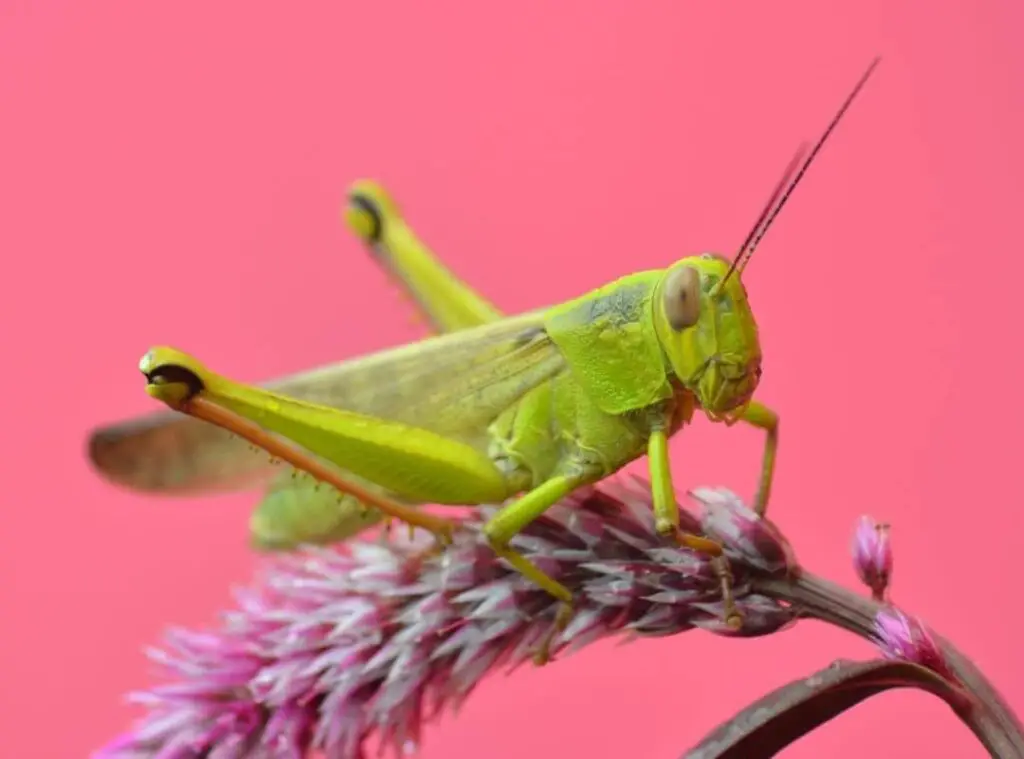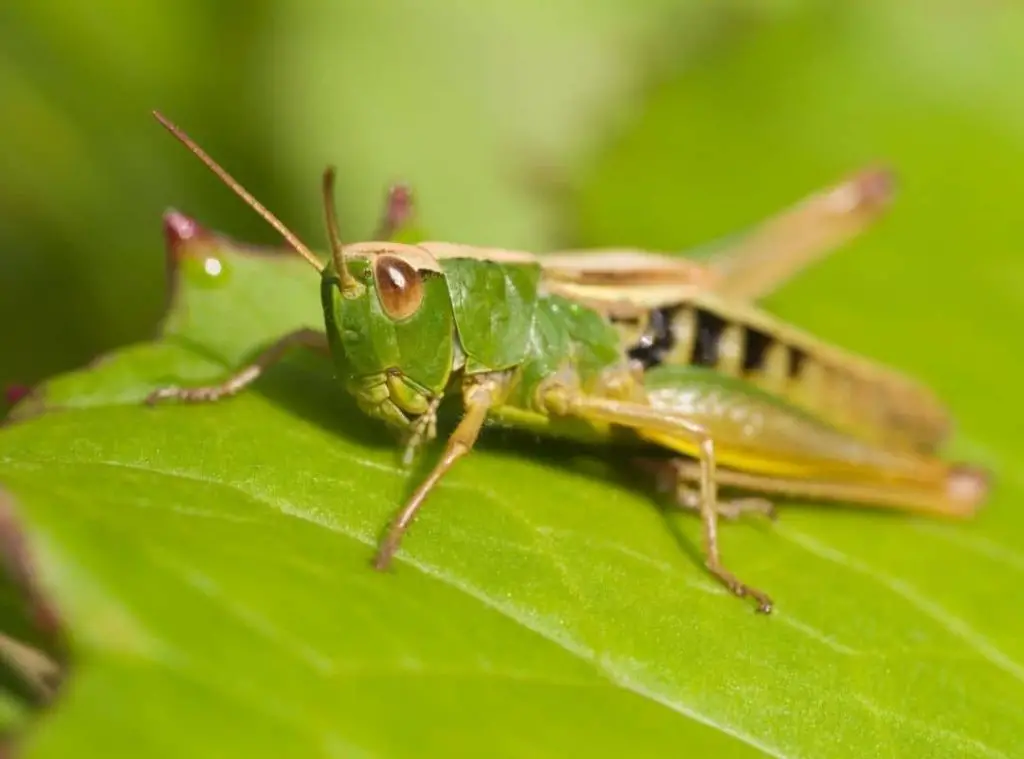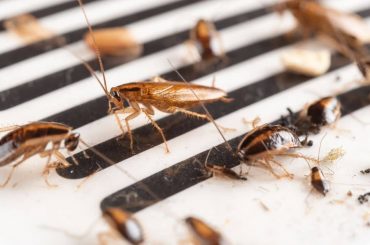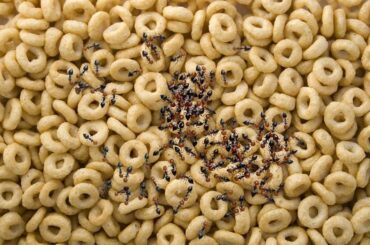How to control grasshoppers? There are 2 major ways you can use to control grasshoppers. Those are using natural or chemical control. In this article I am going to describe those 2 control methods in detail.

How to control grasshoppers Naturally
Controlling grasshoppers is something which could be challenging as they are highly mobile creatures. Having said that, you can usually use baits or sprays to overcome them. To briefly touch on the grasshoppers, they usually lay their eggs in soil, and you could find more than 100 species of grasshoppers.
Grasshoppers can cause significant damages in your yards. Furthermore, the grasshopper’s population could change on a yearly basis, and it could create greater damages. Usually, you can spot them invading your yards during early summer. Further they can withstand hard frosts as well.
Moreover, it is worthy to note that Various species of grasshoppers have different kinds of dietary requirements. There could be some grasshoppers where they will usually depend on grasses or on sedges. On the other hand, there could be some grasshoppers which feed on broad-leaved plants.
Further you may come across certain grasshoppers which usually eat the weed species as well. Grasshoppers do not usually invade the leaves of the trees and the shrubs. However , when there is a heavy outbreak, they would damage them.
Natural Predators
Animal species such as birds, lizards, mantids, spiders and rodents are natural predators of grasshoppers. Many people tend to use these predators on a long-term basis. For example, birds such as swallows would prefer to consume grasshoppers.
So, if you wish to make the birds feel welcome in your garden, you can simply place a bird feeder. Besides, you may also place a bird bath in your yard. Apart from that, you can introduce beneficial insects to prey on grasshoppers. For example, you can use spiders and praying mantis for this purpose.
Till the Ground
You can consider tilling your ground to overcome the grasshopper’s menace. I recommend doing this in early spring. Further you may do this after harvest as well. It will kill the egg pods which will consequently affect the life cycle of the grasshoppers.
Introducing plants to distract the grasshoppers
It is always best to prevent these nasty creatures invading your yard rather than treating them once they arrive in your garden. In that context, best is to create an atmosphere which is less appealing to the grasshoppers. You can consider growing plants such as lilac, forsythia, moss rose and crepe myrtle to deter the grasshoppers.
These plants would grace your yard besides avoiding the grasshopper’s invasion. Further you can grow plants such as garlic, tomatoes to prey on them. Despite this being an ecofriendly way of controlling the grasshoppers, it would take a longer time to get the task done.
Further you will not have 100 % proof against them as well. Hence, I recommend conducting other ways also to control while growing these grasshoppers’ deterring plants.
Remove weeds
As explained in the above, there are grasshoppers’ types which could eat the weeds. Hence if you get rid of their food sources it would make your yards less attractive for the grasshoppers.
Set up a long grass trap
Grasshoppers prefer to occupy the areas where there will be long grass. Hence you can simply consider growing a patch of uncut grass in a corner of your garden so that it would make the grasshoppers stuck in one place. Consequently, you can tackle them easily as they would get stuck in that area.
Cover Vulnerable Plants
You may use row covers between grasshoppers and your plants so that it will act as a barrier. This will make them tempted to go somewhere and eat. It would further be effective in keeping other bad insects away from the plants.
Apply Garlic Spray
You could use garlic spray odor to deter the grasshoppers. Further, it would deter other common garden pests as well. To make it, you can simply blend two cups of garlic with 10 cups of water and then heat it up until it boils. After that leave it overnight so that it can cool.
You may apply the spray into a spray bottle along with one part of garlic solution and into three parts of water. Once you complete everything, you need to spray the solution on the affected leaves of the plants. Ensure that you apply it underneath the leaves too. You may purchase garlic sprays online as well.
Apply Flour to Plants
Once you apply flour on the plants, it will make them starve as they would tend to gum up that with their mouth. You may choose some ordinary all-purpose flour for this purpose. Simply you can sprinkle a thin layer of flour on the leaves. Grasshoppers would tend to eat the flour and it will make them starve and will end up perishing.
Keep Chickens
Despite this being a non-realistic option for everybody, raising chickens and guinea fowls would be one of the most effective ways of getting rid of the grasshoppers. The chicken tends to feed on these insects as they contain protein.
Apply Biological Controls
Grasshoppers can’t stand the smell of elements such as cayenne pepper, garlic, onion etc. So, you can simply make a mix of all these substances into water and spray them at the places where you suspect the grasshoppers are present. If you wish to make a mix of onion, garlic, and pepper, you simply have to blend a garlic clove and onion and cayenne pepper.
Ensure that you blend it properly so that you can spray it well. You need to add water moderately so that it would be sprayable. However, when you apply this, ensure that you cover the leaf and the stem as well. Further if it rained right after you applied them, you need to re spray them.
Applying neem oil
You can apply neem oil also on your plants to repel the grasshoppers. It would act as a barrier for laying eggs on your plants. You may find neem oil at any store.

How to control grasshoppers Chemically
Carbaryl
You could consider using this on many of your fruits and on your vegetables. When you apply this, ensure that you are keeping a preharvest interval of 1-14 days. You can find carbaryl coming in the forms of sprays, dust and in baits as well. The trade name of the carbaryl is sevin.
Acephate
Acephate could be quite effective in creating a systemic activity in the plants. Further they can stay in persistence for a longer time when you compare them with other insecticides. However, you can apply this only on the non-edible crops. The trade name of Acephate is orthene.
Permethrin
Many people tend to use permethrin for garden use. Further you can use some of the formulations of permethrin on so many fruits and on vegetable plants as well. You could spot this coming in many trade names. However , they do not persist for too long when it comes to controlling the grasshoppers.
Diflubenzuron
You may use diflubenzuron only on the immature grasshoppers. In fact, it will affect the chitin formation when molting of the grasshoppers’ nymphs takes place. Having said that, they have a long residual activity though. This is a restricted pesticide though. If you are a licensed pesticide applicator, you may consider using them.
Nosema locustae baits
Nosema locustae bait is a biological control which will produce an infection from protozoa. This is a somewhat slow mode in controlling the grasshoppers. Further you can apply this only on the young grasshoppers. Having said, you may proceed with this option only for certified organic crop productions as well. The trade name of these is NOLO bait or it could be Semaspore as well.
They could be harmful for grasshoppers and can result in infections of the grasshoppers as well. I do not recommend applying this if there is an adult migration. Further, it would not be quite effective on all grasshopper species also. You may use this option along with other control methods if you are looking for a long-term management process.
If you use them, you need to keep them in the refrigerator and use. Further ensure that you check on the expiry date as well.
How to add grasshopper insecticide
Once there is a local grasshopper’s outbreak, you may mainly use sprays and baits to overcome them. However, it is important that you apply them on the developing stages, egg laying spots of grasshoppers so that you can get the best results. Once they grow older, it would be difficult to control them.
You need to mainly concentrate on treating the young grasshoppers. Besides, you need to treat their breeding sites as well. Usually, the grasshoppers could be commonly spotted in lower altitudes in May. On the other hand, you can commonly find grasshoppers in higher elevations in early June.
This would be the ideal time to apply the treatments as they would be quite effective during these times. If there is a large acreage to cover, you can consider using insecticides. Besides these, you may also use baits which consist of carbaryl (sevin) to control the grasshoppers.
Usually, you can find baits which are made of insecticides with bran or with some other carrier. Once the grasshoppers eat these, they would end up perishing. It would be effective in overcoming the rest of other insects around the treated area as well. Having said that, finding sevin is somewhat really challenging.
Since grasshoppers are mobile creatures, it would be enough to apply the insecticide only for 50 % of the yard. You may even do less than 50 % too. If there are grasshoppers which are mature , you can apply this directly to the plants. However, ensure that you select the right insecticide specially if you are applying it on your fruits and on your vegetable plants.
How to identify grasshopper damages
You could commonly spot the grasshoppers’ damage when they eat the crops. They can create greater damage as they have strong chewing mouth parts as well as some strong appetites. They can simply eat whatever they come across in their path. They can literally create uncountable damage for your crops.
They would mainly tend to eat the leaves and the stems of the plants. If the attack gets severe, it would defoliate the entire field as well. Moreover, when they feed, they would usually consume the plants and destroy the foliage as well. Besides, chances are that they can result in direct crop losses too, especially by feeding on the ripened grain.
Harmful grasshopper species
Differential grasshopper (Melanoplus differentialis)
Differential grasshopper, Melanoplus differentialis is a grasshopper species which could invade your garden for the first time. They are one of the largest grasshoppers which belong to the genus Melanplus as well.
Red-legged grasshopper (Melanoplus femurrubrum)
Red-legged grasshopper, Melanoplus femurrubrum is a grasshopper which you can commonly spot, and they tend to feed on many garden plants. This grasshopper species hatches quite later though.
Migratory grasshopper (Melanoplus sanguinipes)
Migratory grasshopper, Melanoplus sanguinipes, is what could cause greater damage for the croplands. They would tend to hatch somewhat early. Further they can take a long migration flight as well.
Conclusion
To sum up, grasshoppers will consume the plants and they could create greater damage for your yards as well. However, as I mentioned in the above it is always best to prevent them landing in your garden rather than treating them to control them.
Read Next : Dead Mouse In House (What Should I Do?)





